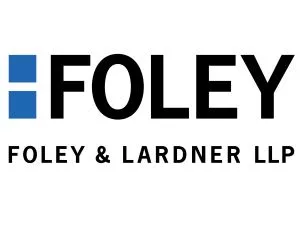- within Technology topic(s)
- in United States
- within Coronavirus (COVID-19), Government and Public Sector topic(s)
- with readers working within the Banking & Credit industries
As Silicon Valley develops the next evolution of technologies from artificial intelligence (AI) to next generation computing, private equity (PE) and venture capital (VC) investors are also facing the next evolution in legal and regulatory challenges that did not exist even five years ago. Historically, innovation outpaces the regulations designed to govern it, and that is certainly true today. So, for investors and legal advisors, transactions involving these frontier technologies are not just about identifying opportunity, but rather rethinking the fundamentals of dealmaking and how risk, control, and value are defined.
The Evolution in Evaluating Transactions
In a traditional VC or PE transaction, there is a clear sense of ownership, intellectual property (IP), and governance. However, when dealing with these cutting-edge technologies, the lines are blurred, and traditional assumptions do not necessarily hold.
Risk must be redefined to expand well beyond just financial exposure or regulatory compliance. It should account for algorithmic accountability, data integrity, and technological sustainability. Control also becomes more complex when value flows through distributed networks, open-sourced frameworks, or autonomous systems. And then there is the recalibration of value itself, as it can no longer be defined solely by tangible assets or traditional revenue models.
The Increasing Importance of Strategic Foresight
Dealmakers should take a more fluid approach to diligence and structuring, thinking beyond the restrictions of static agreements and traditional deal models. Legal teams must anticipate how these rapidly evolving technologies will intersect with regulation, competition, and market expectations, which are also continually changing. And investors must examine not only the value of the technologies companies are developing, but also how resilient that technology and the business model will be as policies shift and new disruptive technologies come online in the future. This kind of strategic foresight is critical.
Strategic foresight involves evaluating how emerging technologies will interact with issues such as shifting antitrust enforcement, data privacy laws, and geopolitical concerns. To effectively do this, harder questions must be asked. Does the company's core technology depend on data that may later be restricted or regulated? Could its algorithms or AI models trigger new forms of liability as standards evolve? Or are there export control or national security concerns tied to the company's R&D partnerships? These are the kinds of issues that must be considered as they can affect valuation, timing, and risk.
Bridging the Innovation and Regulation Gap
It is critical to bridge the gap between innovation and regulation. Legal advisors play a key role here, helping founders and investors align cutting-edge technology with practical, enforceable business terms. Legal teams can help shape how risk is allocated and mitigated by crafting and negotiating agreements that are flexible enough to accommodate technological change and consider alternative structures such as staged acquisitions, earn-outs, or joint ventures that let buyers and investors calibrate exposure as a company's technology matures or as regulatory clarity improves.
When strategic foresight is coupled with a deep understanding of the rapidly changing technology landscape, attorneys can help clients build deal structures that are capable of withstanding policy shifts, public scrutiny, and the relentless pace of innovation that defines Silicon Valley. The best legal advice isn't just about closing the deal, it's about positioning the company, and its investors, to be prepared and to thrive no matter what comes next.
The content of this article is intended to provide a general guide to the subject matter. Specialist advice should be sought about your specific circumstances.



